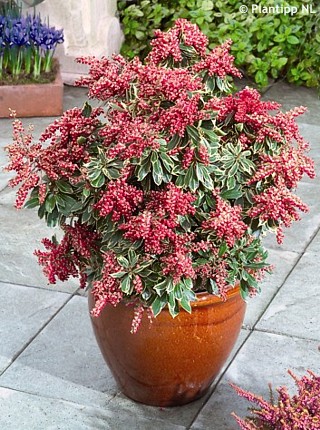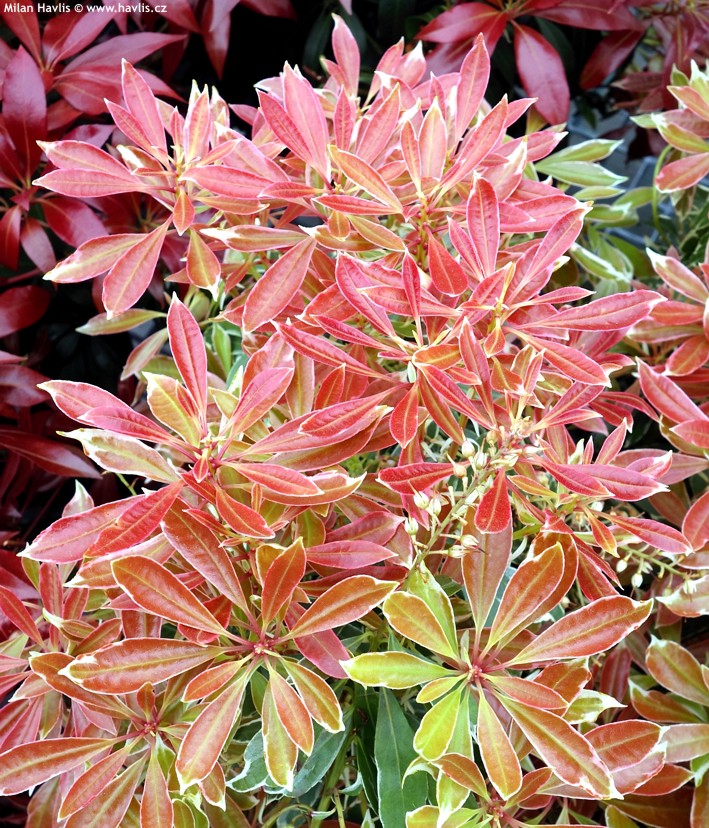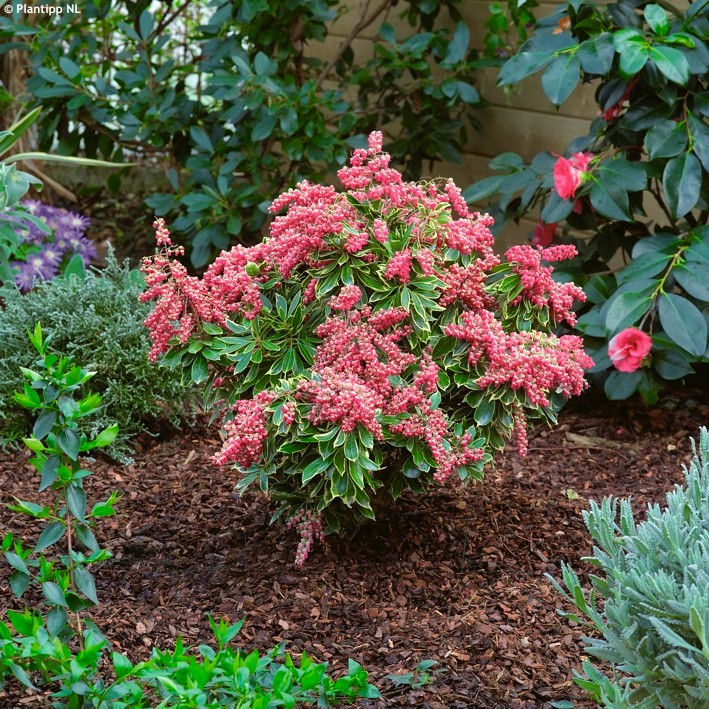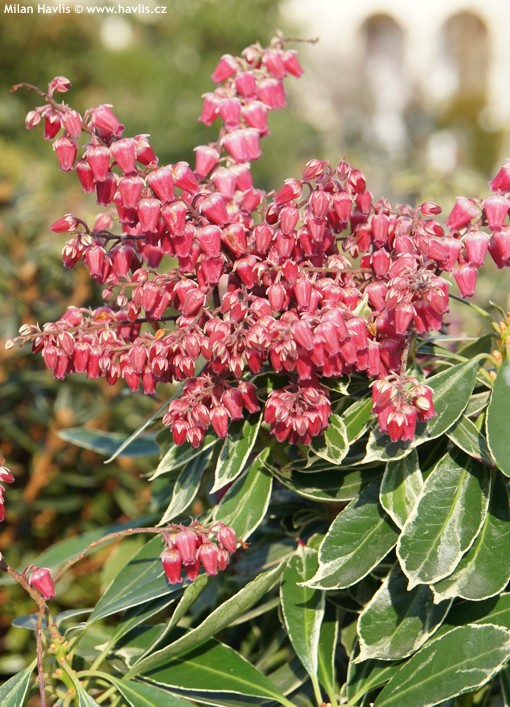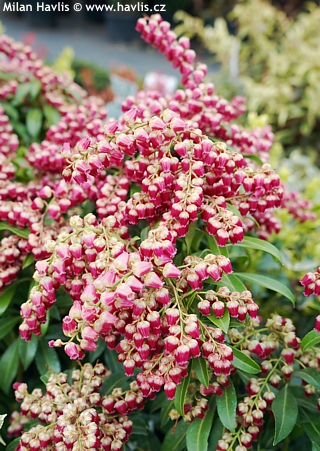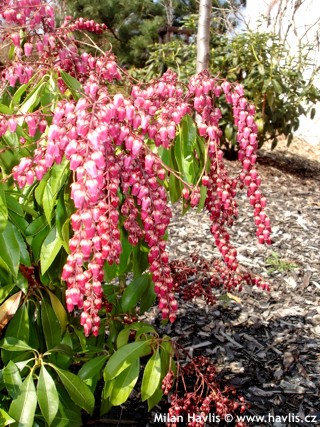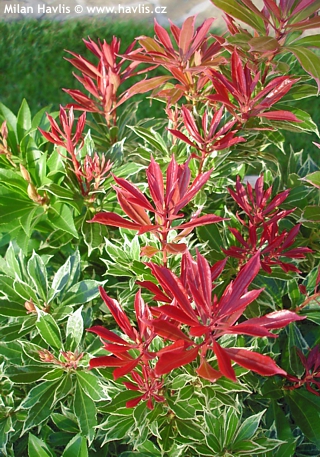Pieris japonica 'RALTO'® lily-of-the-valley shrub
Pieris
Lily-of-the-valley shrubs are very popular ericaceous plants with attractive foliage and abundant flowering. This one is a novelty from the Netherlands where it was first discovered in 2001 by a nurseryman with a really long name: Ronnie Adrianus Antonius van Opstal. He noticed a compact plant with variegated foliage among Valley Valentine pieris so he decided to give it a try reproducing it. New plant was patented under PP 19,331 in 2008 and was named Ralto.
Ralto pieris brings three spectacular features which make it different compared to the species. Its evergreen, narrowly lance-shaped leaves are variegated creamy white or even light yellow colour at the margins. Typical lily-of-the-valley-like flowers are deep red and come out in March for 2-4 weeks. They are formed in pendent racemes and have a light scent. The plant itself is more compact and slower growing than its parent Valley Valentine. It is perfect for a mixed border among dwarf conifers, for a large rockery, it will also look great in a large pot on a patio.
Pieris does not require much maintenance. But if you wish to have a perfect plant here are a few suggestions: cut off spent flower racemes to prevent them from making seeds. During late spring and summer check the leaves 2 or 3 times for tiny spots on the upper sides – they manifest insect attack whose miniature worms are living inside the leaves and produce sticky sap on the underneath of the leaves. In such case spray it with a suitable insecticide – one dose is usually enough. In winter remove heavy and wet snow from the top of the plant to prevent its fragile branches from bending or breaking.
Ericaceous plants require soil that is light, acidic, and constantly moist (not wet). If your garden soil is too heavy do not dig a deep hole but make a mounded and wide bed topped up with a good mixture of peat, fine bark chips, and leaf (forest) litter. Keep the soil moist by mulching. Slow-release fertilizers for acid-loving plants are advised. Experienced hardiness is -24°C (USDA zone 6) but is expected to be even lower: about -27°C.
Last update 28-12-2010

































